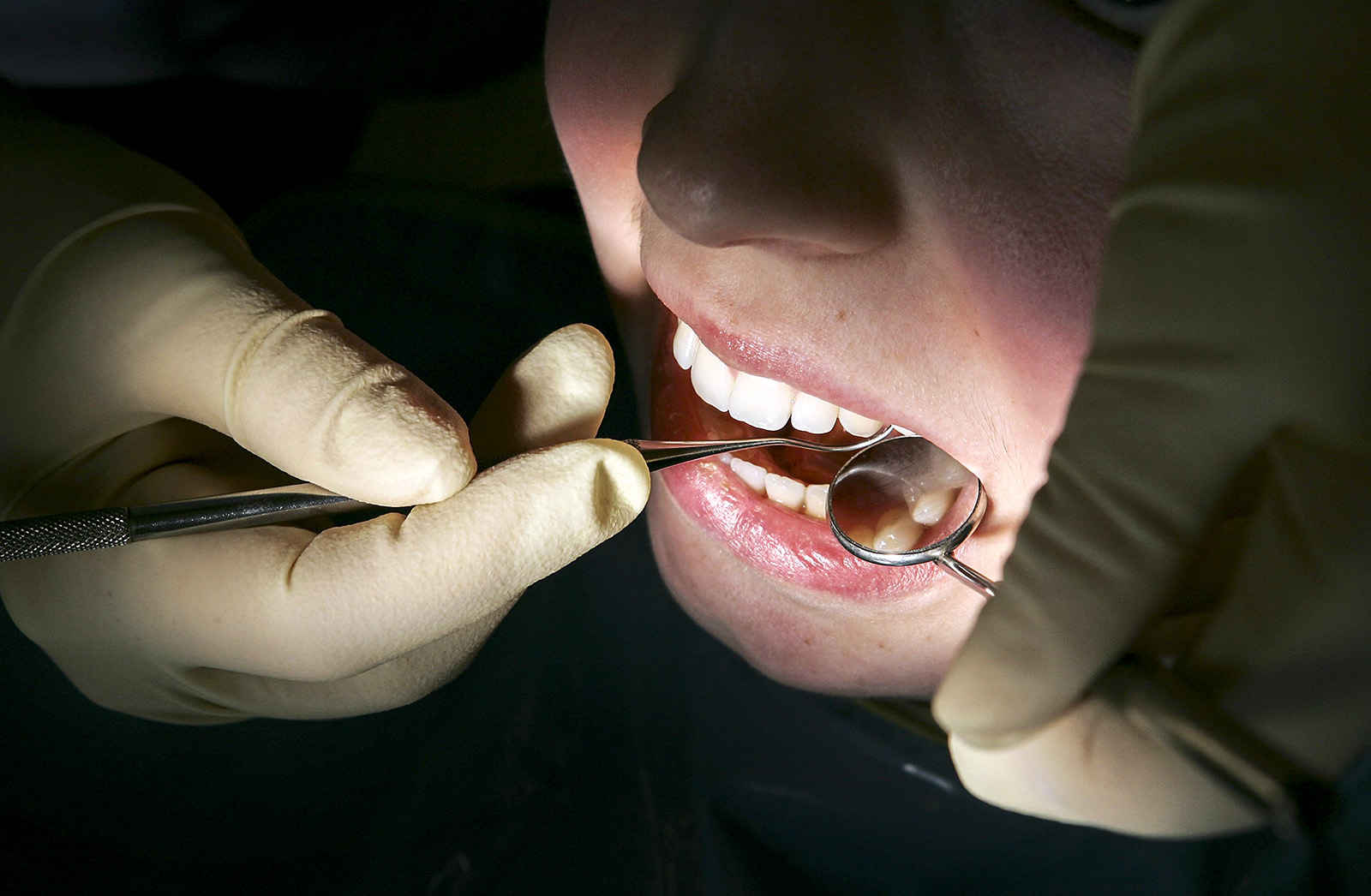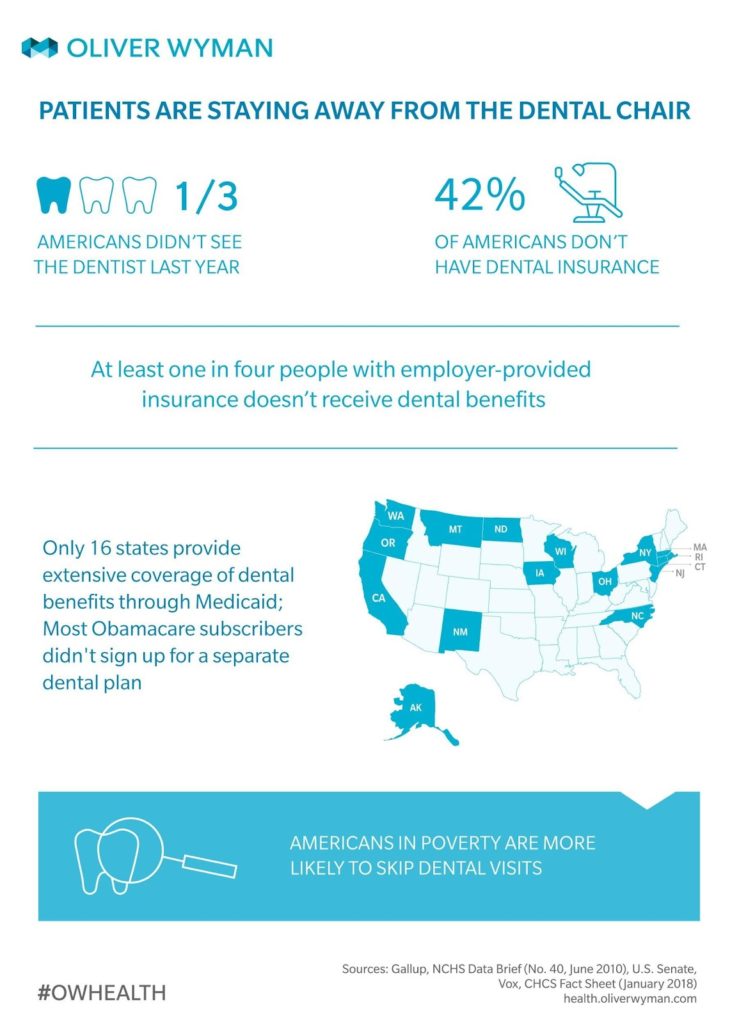Health Care’s Next Front Door? Dental Care.

A patient receives dental treatment in Great Bookham, England. Preventive dental services are starting to become an accessible, consumer-friendly convenience, meaning more people will get the necessary dental care they need more often.
Photo: Peter Macdiarmid/Getty Images
New and emerging dental care models have great potential to become convenient care solutions in dentistry and help eradicate patients’ most common barriers to receiving the dental care they want and need.
Technology, basic services and mid-level practitioners can make dental care more accessible and affordable for the average person. They can transform preventive dental care from being a segregated concept to being part of a patient’s holistic medical journey — something that happens at clinics, in the emergency room, at home and beyond.
When preventive dental services become an accessible, consumer-friendly convenience — instead of a stigma-laden task akin to pulling teeth — more people will get the necessary dental care they need more often.
Many Better Options for Patients
We’ve already seen the explosion of the “new front door” in health care, where many models have successfully lowered total care costs while providing a valued, consumer-centric experience. Patients can now manage their primary care, chronic conditions and behavioral health through telemedicine, urgent care, retail clinics and even at home or at work through in-person visits and remote monitoring.
Why can’t dental care also have its own new front door, where ease and convenience drives better access, resulting in consumer action rather than apathy?
A Teeth Cleaning While Waiting for Your Flight
When walking through the Minneapolis airport, almost every good or service is right at your fingertips — food from France to Mexico, goods from luxury bubble baths to athleisure apparel, services like shoe shining, flu shots, a virtual driving range in Terminal 1, seaweed wrap massages, or even pre-flight hourly rental of a conference room for 100. So why not spend, say, 20 minutes getting your teeth cleaned and doing a quick scan for periodontal disease or oral cancer before you board your flight? That’s convenient, preventive care. (And, hey, no bad breath for your seatmate to endure!)
Let’s take it a step further for a farmer living on a Wyoming ranch. What if she just snaps a picture of her mouth with the help of an app to quickly identify a potential issue instead of driving 75 miles to the nearest dentist? What if her preventive checkup is with a mid-level dental practitioner and instead takes place at the same office at the same time she receives her annual medical physical? It’s a 25-mile drive, but she gets a physical, cleaning and oral screening all at once. And in the interim between appointments, what if another app on her toothbrush helps her continuously monitor her brushing and assess her potential for developing gum disease? Unfortunately, dental care for many patients just like this Wyoming farmer is more “what if” than “what is” today, even though the capabilities to bridge the gap exist.
Millennials Willing to See Dentistry Differently
Poor oral health can significantly impact overall health — even serving as the primary cause of patients’ high emergency room bills. Health plan members diagnosed with dental and gum conditions are 25% more likely to suffer from heart disease, twice as likely to visit the emergency room or hospital, and spend, on average, two times more annually on overall health care costs.
Proper oral care for the body’s “gateway” is a compelling value proposition to both consumers and the health care ecosystem. According to Oliver Wyman’s 2018 Consumer Survey of U.S. Healthcare, generational differences may be the defining factor for what tomorrow’s general care delivery system looks like.
Forty-seven percent of millennials are interested in new kinds of health care services, compared to baby boomers, who tend to be least interested in such services, perhaps due to rising cost concerns. Whereas boomers tend to be satisfied with their status quo health care experiences, millennials demand high-tech, high-touch offerings, and unlike older generations, demand a system that listens and invents care around consumers’ needs and wants. More demand for medical and dental new front doors of care delivery are on the horizon. 
Erasing Anxiety About a Visit to the Dentist
Recent surveys suggest that up to 61% of people are apprehensive about seeing the dentist, 15% of which are so anxious that they avoid the dentist almost entirely. By making it easier to see an oral hygienist, in a setting more comfortable for consumers (including integrating dental care in primary medical care facilities), some of that anxiety could be erased.
The new front door for dental care can provide more access points, more integration, more mid-level providers offering basic preventive dentistry, and more affordable, competitive alternatives to the dental office.
Other front doors could also include “dental tourism.” For example, one dentist practicing in Mexico sees mostly American patients hailing from Texas, Florida and Colorado. With dental implants costing just $549 (versus $1,500 in the U.S.), her business is booming. Crowns and bridges are also a third of the price.
Why Isn’t Innovation Happening Faster in Dentistry?
First, dentists graduating with over $300,000 to $400,000 in debt aren’t eager to cede revenue from the traditional practices they buy into. Second, independence gives them more freedom to be more “robust” or “expansive” in their diagnoses and treatment plans. Third, dentists are a small, fragmented market. Last, unlike the medical realm, where big systems drive integration at scale, dentists don’t typically have scale or incentive to change their practice methods and invest in new front door access points.
But competition, transparency, more affordable preventive options, integration into health plans and adherence to evidence-based protocols all signal change to the status quo and threaten the current business model. New players will fill the void with new front door solutions.
Integrated medical plans will promote medical-dental coordination as a competitive edge. Regulators will allow it because it’s right for the consumer and will lead to better outcomes. Preventive dental care that’s available when and where consumers are is the new future. And this future’s already here. We just have to open the door — and keep it open.
This is an abridged version of a longer piece from Oliver Wyman Health.






